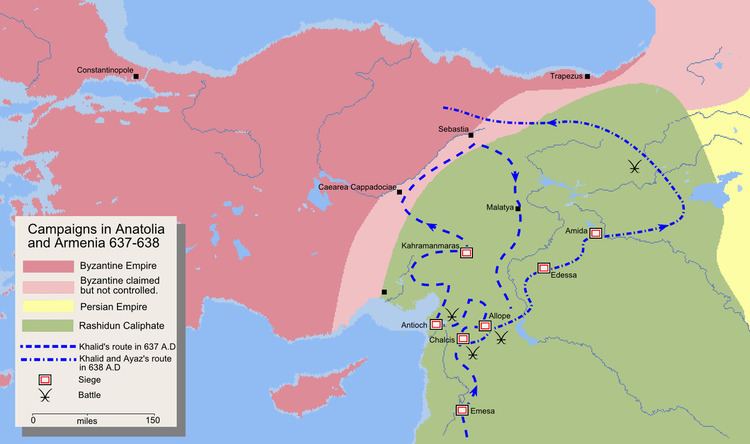 | ||
Year 638 (DCXXXVIII) was a common year starting on Thursday (link will display the full calendar) of the Julian calendar. The denomination 638 for this year has been used since the early medieval period, when the Anno Domini calendar era became the prevalent method in Europe for naming years.
Contents
Byzantine Empire
Britain
Arabian Empire
Asia
Arts and sciences
Religion
Births
Deaths
References
638 Wikipedia(Text) CC BY-SA
